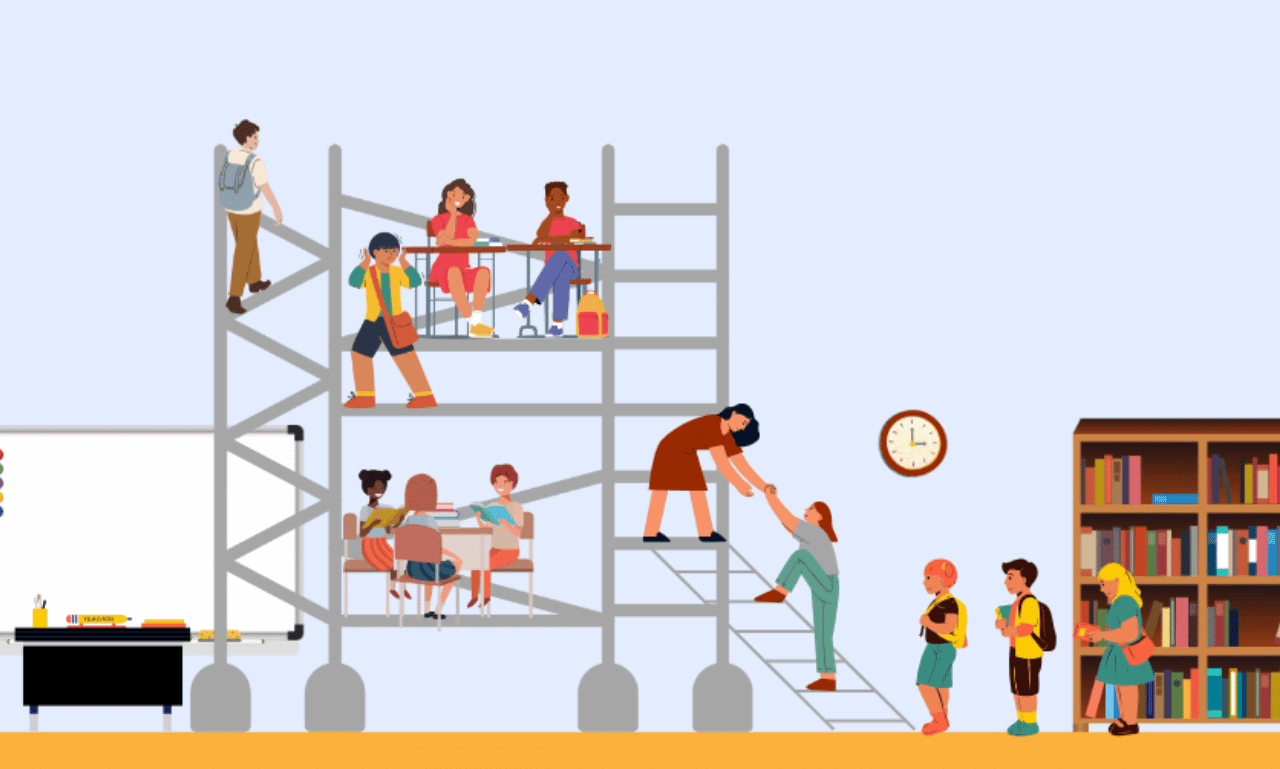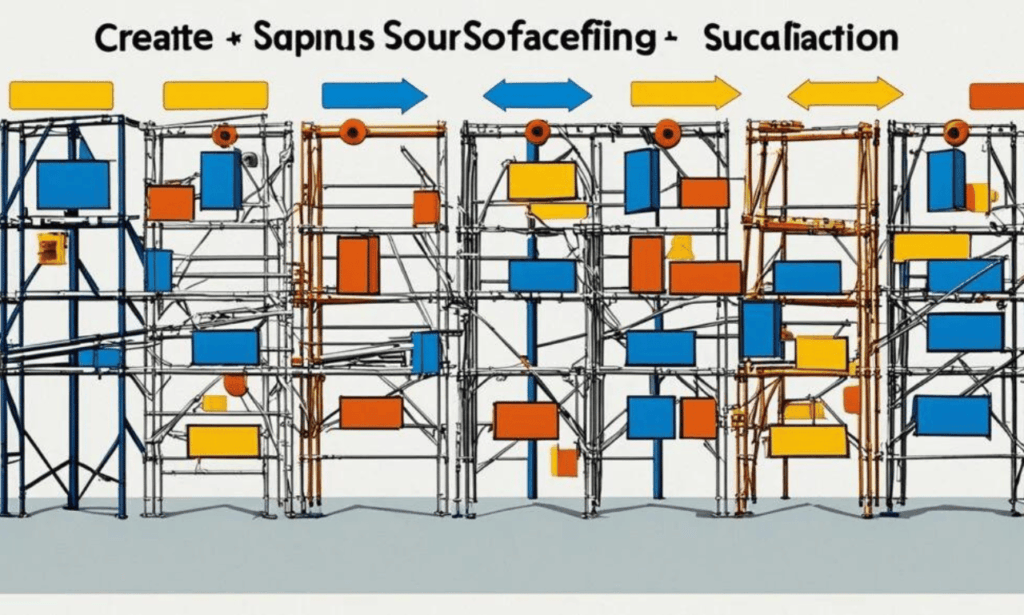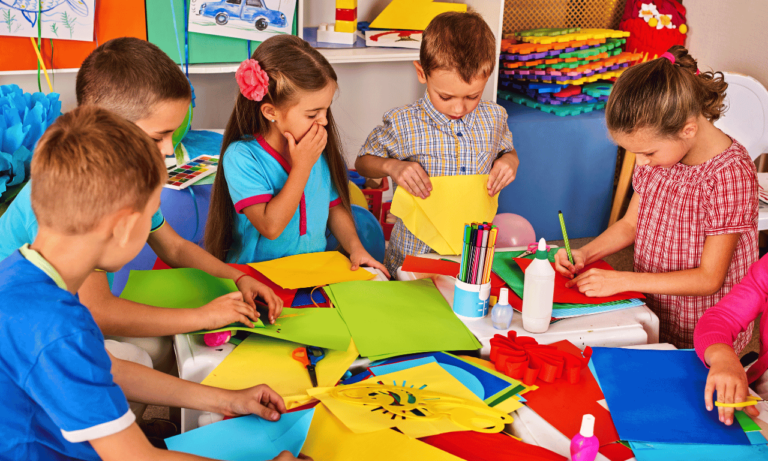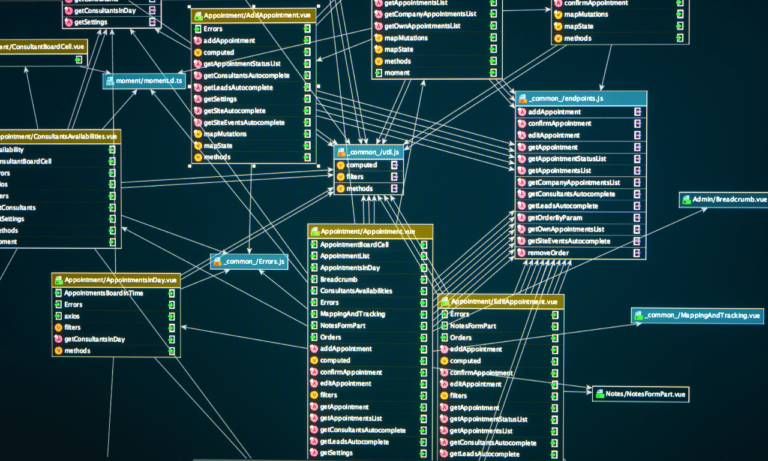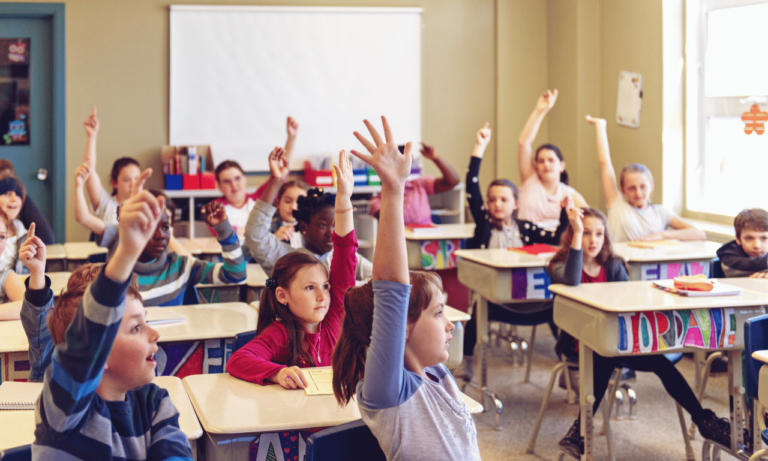Phone:
(+65)8319-0742
The evolution of education continually brings us back to the centrality of the student’s experience. Learner-Centered Scaffolding is an instructional approach that champions personalized learning support, laying the groundwork for students to independently master complex concepts built upon their existing knowledge. Aiming to enhance cognitive development, this method aligns perfectly with the philosophy of student-centered teaching methods, inviting a personalized touch to the learning process that considers each student’s unique journey.
Since its inception in the 1970s, the concept has evolved, taking cues from the educational theories of American psychologist Jerome Bruner and the esteemed Lev Vygotsky’s zone of proximal development. These approaches underscore the importance of student empowerment approaches, which encourage learners to take on more responsibility and actively engage with their learning experiences. By adjusting to the individual’s needs, Learner-Centered Scaffolding creates a dynamic learning environment where students feel supported and confident in their ability to conquer the next academic challenge.
Key Takeaways
- Embrace Learner-Centered Scaffolding as a tool for fostering deep cognitive development and self-reliance in students.
- Tap into student-centered teaching methods to create more engaging and responsive educational experiences.
- Implement personalized learning support to cater to the diverse abilities and learning styles within the classroom.
- Utilize student empowerment approaches to instill confidence and ownership of learning in each student.
- Integrate the concept’s origins and developmental psychology foundations to inform and refine teaching practices.
Understanding the Fundamentals of Learner-Centered Scaffolding
The concept of educational scaffolding techniques is rooted in the idea that learning should be segmented into more manageable units, enabling educators to provide targeted, personalized guidance. This approach represents a key difference from traditional teaching methods, where structured support may be lacking, and students may struggle with complex concepts on their own.
Scaffolding in education is characterized by establishing a supportive learning environment where educators actively connect new information to students’ existing knowledge. The careful design of scaffolding enables students to engage deeply and retain new concepts more efficiently. As part of cognitive development support, scaffolding also plays a vital role in minimizing student frustration, enhancing communication, and effectively promoting an inclusive educational experience through differentiation.
As each layer of scaffolding is introduced and then gradually removed, students are encouraged to move towards a deeper understanding and greater independence. This phased reduction in support requires a dynamic and responsive educational approach, where educators must carefully gauge and adjust to each student’s progress.
To illustrate how scaffolding supports various aspects of the learning process, consider the table below which outlines different forms of scaffolding and their impact on learning:
| Scaffolding Technique | Objective | Impact on Student Learning |
|---|---|---|
| Breaking down complex tasks | To simplify and clarify the steps required to complete a task | Enhances understanding and reduces cognitive overload |
| Providing clear instructions and examples | To give students a model to follow | Increases the likelihood of successful task completion and concept retention |
| Question prompts | To stimulate thinking and encourage deeper inquiry | Facilitates critical thinking and helps make connections between concepts |
| Peer collaboration | To foster a collaborative learning environment | Promotes social learning and allows students to learn from diverse perspectives |
| Immediate feedback | To provide direction and correction in real-time | Supports the refinement of skills and knowledge through prompt intervention |
The integration of these educational scaffolding techniques into daily classroom practices ensures that each student can navigate educational challenges with the appropriate support, thereby catering to a comprehensive range of cognitive development needs.
Learner-Centered Scaffolding Techniques for Cognitive Development
Delving into the realm of learner-centered scaffolding, it is essential to focus on methodologies that integrate teaching strategies with robust student support strategies. These frameworks are designed not only to enhance the teaching process but to also ensure that each student can benefit from individualized student guidance. As educators, the adoption of these practices is imperative for facilitating cognitive development and reinforcing student acumen across various subjects.
Create Assignments That Build on Foundational Knowledge
Assignments that are crafted to link directly with prior knowledge enable students to scaffold their learning efficiently. Such assignments serve as the stepping stones that help bridge the gap between what is known and what is yet to be learned, making it a pivotal teaching strategy. Effective scaffolding starts with identifying the foundational skills of students and building upon them with incremental challenges that increase in complexity. This approach not only reinforces their existing knowledge but also paves the way for uncovering new insights.
Incorporate Active Learning Through Guided Practice
Active learning is a dynamic educational scaffold that encourages students to engage directly with the material. Through guided practice, learners interact with one another and apply their knowledge in cooperative settings. This embodiment of student support strategies positions the teacher as a facilitator, who guides discussions and provides immediate feedback. Students benefit from this collaborative teaching strategy, as they practice new skills in a supportive environment that nurtures their independence as learners.
Utilize Visual Aids to Enhance Conceptual Understanding
The incorporation of visual aids into scaffolding is a prime example of adapting teaching strategies to cater to different learning styles. Tools such as graphic organizers, charts, and models aid in making abstract concepts more tangible. These visual representations not only enhance understanding but also assist in retention and application of knowledge. By integrating individualized student guidance through visual aids, educators can ensure that complex information is accessible to all students, thereby supporting their cognitive development.
| Technique | Purpose | Examples |
|---|---|---|
| Constructive Assignments | To build upon what students already know | Research projects, Sequenced writing tasks |
| Active Learning | To engage students through participation | Group discussions, Peer teaching sessions |
| Visual Aids | To simplify complex subjects visually | Infographics, Interactive whiteboard activities |
Strategies to Personalize Learning Support in the Classroom
Every student brings a unique set of skills and needs to the learning environment, making personalized learning support a critical aspect of successful educational scaffolding techniques. Integrating student support strategies that cater to individual learning styles is not just beneficial, it’s imperative for fostering academic growth and student engagement.
One of the core elements of personalized instruction involves adaptive teaching. This approach tailors educational scaffolding techniques to match the pace and capabilities of each student. For example, while one student might require in-depth explanations and multiple examples, another might excel with briefer, more challenging tasks.
- Pre-reading activities to stimulate background knowledge
- Sentence frames to support language development and writing skills
- Manipulatives to enhance understanding in mathematics
These tools are just the tip of the iceberg when it comes to the resources available to teachers aiming to provide personalized learning support.
| Strategy | Description | Impact on Learning |
|---|---|---|
| Differentiated Instruction | Adapt teaching methods and materials to cater to diverse learning abilities. | Ensures all students have access to learning at their level. |
| Formative Assessments | Regular, informal assessments to monitor student progress and inform instruction. | Provides immediate feedback for students and teachers. |
| One-on-One Tutoring | Personal time with the teacher to address individual student needs. | Allows for direct and specific feedback, accelerating learning. |
| Learning Stations | Activities designed for students to rotate through at their own pace. | Encourages self-directed learning and responsibility. |
Every strategy mentioned directly contributes to establishing a classroom where educational scaffolding techniques shine and student support strategies are broadened. By creating personalized learning pathways through differentiation, scaffolding within the classroom not only becomes inclusive, it ignites a love for learning driven by curiosity and personal achievement.
Maximizing Student Empowerment Through Scaffolding in Education
Embracing student empowerment approaches within the educational sphere necessitates a paradigm shift towards student-centered teaching methods and scaffolded instruction that honors the unique learning journey of each individual. By thoughtfully incorporating individualized student guidance, educators unlock the true potential of their students, fostering an environment ripe for academic growth and personal development.
Adjusting Instruction to Meet the “Zone of Proximal Development”
Teachers adept at scaffolding appreciate the importance of calibrating lessons to coincide with the zone of proximal development—a dynamic space where students are adequately challenged but not overwhelmed. By tailoring instruction to this zone, student engagement naturally improves as lessons resonate more deeply with their capabilities and aspirations.
Encouraging Student Autonomy and Ownership of Learning
One of the hallmarks of student empowerment approaches is the encouragement of student autonomy. Facilitated by scaffolded instruction, learners progressively take ownership of their educational experiences, crafting a path of discovery and mastery that is uniquely their own. This approach not only supports academic success but also instills a lifelong love of learning.
Progress Monitoring and Feedback to Promote Independent Learning
Integral to scaffolding are the mechanisms of progress monitoring and feedback. These elements serve as the compass that guides students towards academic independence. Teachers engaged in student-centered teaching methods often witness the transformative effect of meaningful feedback on student motivation and self-efficacy.
- Active participation in learning objectives
- Empowerment through skillful questioning techniques
- Reflection exercises to deepen understanding
| Teaching Components | Empowering Effects | Instructional Adjustments |
|---|---|---|
| Guided Discovery | Enhanced Critical Thinking | Zone-Aligned Challenges |
| Pair and Share Exercises | Improved Communication Skills | Peer-to-Peer Scaffolds |
| Problem-Based Assignments | Increased Problem-Solving Abilities | Real-World Scenarios |
By seamlessly integrating student empowerment approaches, individualized student guidance, and student-centered teaching methods, educators not only foster personal growth and independence in students but also lay the foundation for a robust and adaptable future workforce.
Leveraging Educational Scaffolding Techniques for Diverse Learners
Inclusive education is a priority in today’s diverse classrooms, where educational scaffolding techniques play a pivotal role. These strategies are instrumental in addressing diverse learning needs, ensuring that every student receives individualized student guidance. Teachers adept in these methods adjust their instructional approaches to present content in ways that resonate with each learner, setting the stage for academic success and positive self-esteem.
Scaffolding techniques are not one-size-fits-all; they must be tailored to the educational journey of the students they aim to support. By breaking down tasks into manageable pieces and providing a toolkit for learners to approach challenges, educators empower students with the confidence to take ownership of their learning process.
- Guided reading sessions cater to literacy development
- Step-by-step problem-solving enriches mathematical understanding
- Customized feedback addresses individual student’s progress
Let’s consider the following table that outlines various scaffolding techniques mapped to different subject areas, demonstrating the range of approaches for diverse learning scenarios:
| Subject | Scaffolding Technique | Benefit |
|---|---|---|
| Reading | Graphic Organizers | Helps students organize thoughts and engage with text |
| Mathematics | Manipulatives | Provides a hands-on approach to abstract concepts |
| Science | Interactive Experiments | Encourages question-based learning and discovery |
| History | Timelines | Assists in understanding chronological events and causality |
Scaffolding is more than just a teaching method; it’s a cornerstone for inclusive education. By embracing these techniques, educators can ensure that all learners are provided with the support they need to thrive in the complex tapestry of the modern classroom.
Conclusion
At the heart of modern pedagogy, learner-centered scaffolding serves as a testament to the evolution of student support in education. By recognizing and appreciating the individual backgrounds and abilities of students, this approach equips educators with the tools to deliver personalized learning experiences that cater to each student’s needs. The philosophy behind learner-centered scaffolding reinforces the idea that academic mastery emerges from a foundation of tailored support, thus enhancing educational development and fostering the critical skills necessary for today’s ever-changing world.
The deployment of learner-centered scaffolding within our classrooms echoes a commitment to not only student empowerment approaches, but also an inclusive ethos that honours the diversity of thought and experience students bring to the learning environment. By guiding students through complexities with a structured but adaptable framework, learners are inspired to cultivate a spirit of enquiry and independence. Such empowerment seeds the grounds for confident, autonomous thinkers prepared to navigate the multitude of challenges awaiting them beyond the classroom walls.
In fostering environments that thrive on collaboration, encouragement, and bespoke guidance, educators set their students on a journey that transcends academic goals, contributing to a robust and dynamic society of lifelong learners. As we look to the future of education, learner-centered scaffolding stands not as a mere technique but as a cornerstone principle that promises a more engaged, thoughtful, and prepared generation ready to contribute to the world around them.
FAQ
What is Learner-Centered Scaffolding?
Learner-Centered Scaffolding is an instructional approach that provides support to students as they engage with new material. It’s designed to foster autonomy and gradually develop mastery by creating a bridge from what students already know to more advanced concepts. This personalized learning support is critical for enhancing cognitive development and ensuring students understand and retain information.
How do educational scaffolding techniques support cognitive development?
Educational scaffolding techniques support cognitive development by breaking down complex information into manageable parts and providing personalized assistance. As students progress, the support is gradually removed, encouraging them to think critically and problem-solve independently, which are crucial skills for cognitive growth.
Can you give examples of individualized student guidance strategies?
Individualized student guidance strategies include providing tailored feedback, offering differentiated tasks that cater to students’ abilities, and setting individual learning goals. Other strategies involve one-on-one support, peer tutoring, and the use of adaptive technology that adjusts to each student’s learning pace.
What role does student empowerment play in scaffolding?
Student empowerment is central to scaffolding as it encourages students to take an active role in their learning. By providing opportunities for autonomy, choice, and independent problem-solving, scaffolding helps students gain confidence, become self-regulated learners, and develop a sense of ownership over their educational journey.
How can teachers personalize learning support in the classroom?
Teachers can personalize learning support by using diagnostic assessments to understand each student’s starting point, designing lessons that cater to a range of learning styles, and providing options for how students demonstrate their understanding. Adaptive teaching strategies ensure that every student receives the support they need to succeed.
How do visual aids enhance conceptual understanding?
Visual aids like charts, diagrams, and models can help students visualize complex concepts, organize information, and make connections between ideas. They cater to visual learners and are often more memorable than text alone, which can significantly enhance students’ understanding and retention of material.
What is the “Zone of Proximal Development” in scaffolding?
The “Zone of Proximal Development” is a concept that refers to the difference between what a learner can do without help and what they can achieve with guidance and encouragement from a skilled partner. Scaffolding techniques are used to support learners within this zone, providing the optimal level of challenge to promote learning and growth.
Why is scaffolding important for diverse learners?
Scaffolding is important for diverse learners because it allows educators to meet students where they are and provide the necessary support to help them succeed. This approach respects the unique backgrounds, abilities, and learning styles of each student, promoting equity and inclusion within the learning environment.

Protection Scaffolding: Ensuring Site Safety
Safety is of paramount importance when working at height, and proper protection scaffolding is crucial…

Curriculum Scaffolding Techniques for Educators
Enhancing the educational experience for students involves a delicate balance of effective teaching methods,…

Aluminum vs Tube Couplers: Secure pros and cons
Choosing the right material for tube coupling is key in many industries. The comparison of aluminum vs…

Essential Scaffold User Training Components
Scaffold user training is key to keeping workers safe and following the law in construction. Good training…

OSHA Standards: Sources and Exceptions
The Occupational Safety and Health Administration (OSHA) works to make sure workplaces are safe for everyone….
No posts found

